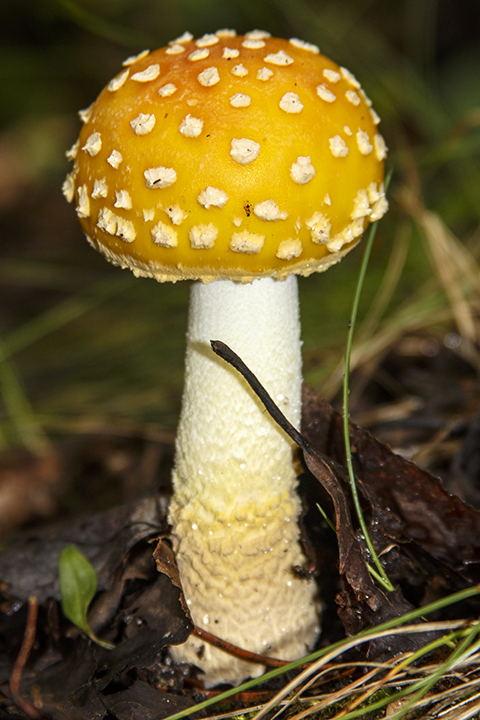American Eastern Yellow Fly Agaric (Amanita muscaria var. guessowii) is a large, conspicuous, yellow variety of one of the most recognizable mushrooms in the world. It is widespread in North America, common in northeastern United States, and not uncommon in Minnesota. It occurs in coniferous, deciduous, or mixed woodlands, woodland edges, and among planted trees. It is found from June to November, solitary, scattered, in groups, or in fairy rings, on the ground under pine, spruce, fir, aspen, or birch trees. It is mycorrhizal, obtaining its nutrients from the rootlets of a tree while facilitating greater absorption of nutrients from the soil by the tree.
Most guidebooks and authorities state that American Eastern Yellow Fly Agaric is poisonous, and it is true that about 90% of mushroom-related fatalities involve Amanitas. Fly agaric contains the hallucinogenic compounds muscimole and ibotenic acid. They may have been involved in prehistoric rituals. It is poisonous in large, possibly even in moderate amounts, but not normally fatal.
Mushrooms in the genus Amanita are identified by pale gills usually not attached to the stem; a white spore print; a universal veil that creates a sac-like base or other distinctive feature at the base of the stem; and caps that are more or less dry. Fly Agarics (Amanita muscaria) are identified by cottony scales on the cap; a partial veil that creates a persistent ring or collar of tissue at the middle or near the top of the stalk; and one ring or two to four concentric rings of scales at the base of the stalk. American Eastern Yellow Fly Agaric is distinguished by a bright yellow or orangish-yellow cap that is often reddish-orange or yellowish-orange in the center.
http://www.minnesotaseasons.com/Fungi/American_Eastern_Yellow_Fly_Agaric.html

